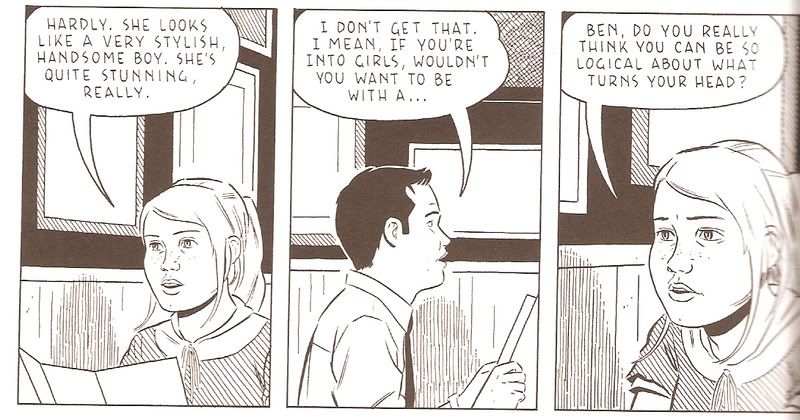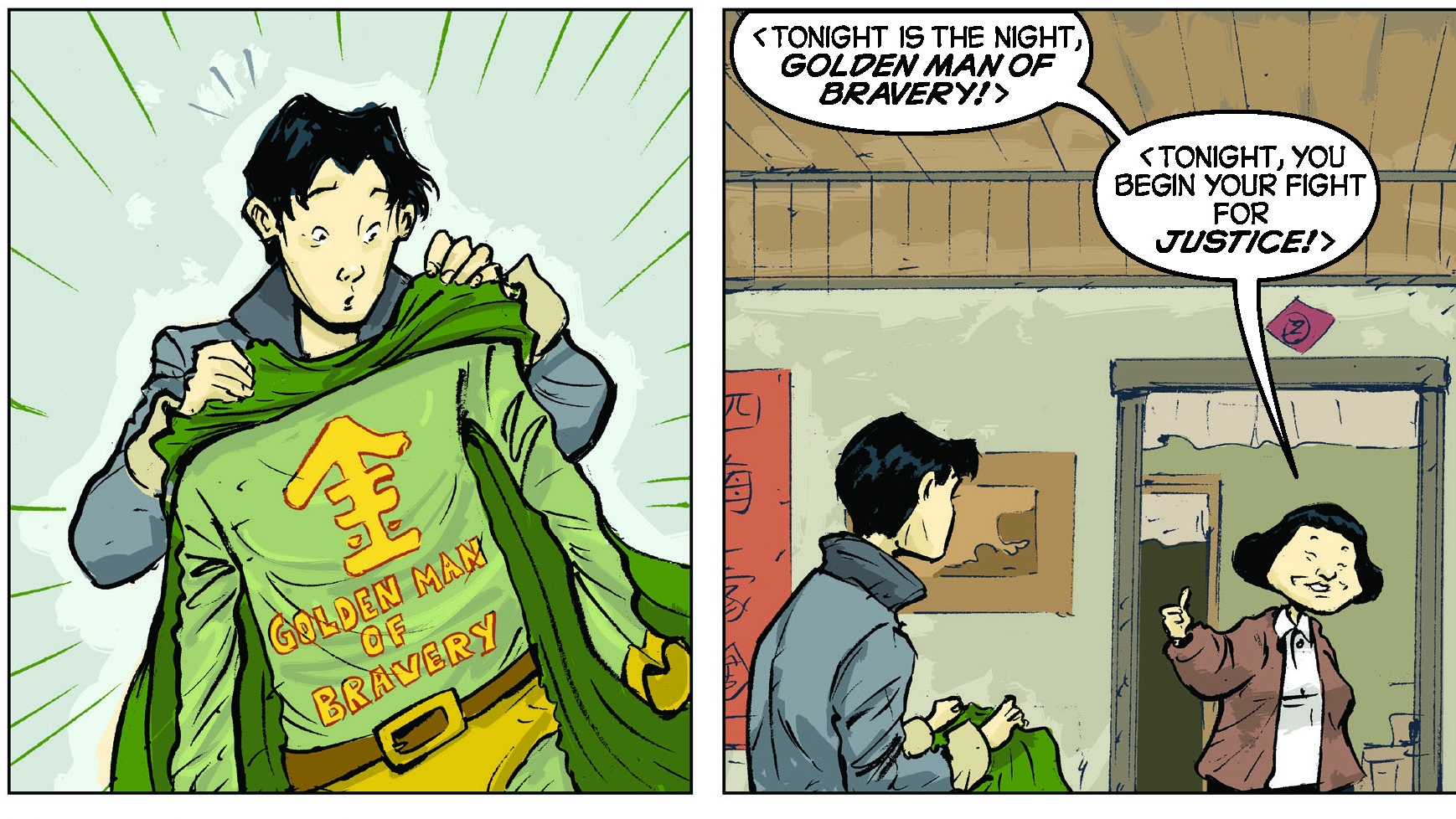As we have seen in previous readings, American Born Chinese is another comic that is touching on the
personal life experiences of its creator from a child’s perspective. The
greatest difference is the use of a Chinese mythological folktale as a
secondary story running along side the primary narrative.
Each frame-by-frame movement of the story takes the reader
through various moment-to-moment transitions, subject-to-subject transitions
and action-to-action transitions. However we rarely see an aspect-to-aspect
transition during the story. If you think back to Scott McCloud’s chapter
‘Blood in the Gutter’ these transitions show a lot of “happening” moments.
How do you think that these transitions invoke the reader’s
emotional response to the story? Or do you think that these transitions bring a
different light to the story being told?
Do you feel
that these transitions differ in their use when compared to how such
transitions were used in previous stories?
Remember Scott McCloud said, “Traditional western art and
literature don’t wander much. On the whole, we’re a pretty goal-oriented
culture.” So a great deal of western art and comics often emphasize ‘getting
there’ versus ‘being there.’
How do you think this concept of ‘getting there’ versus ‘being
there’ is shown in or has impacted how this story perceived?









